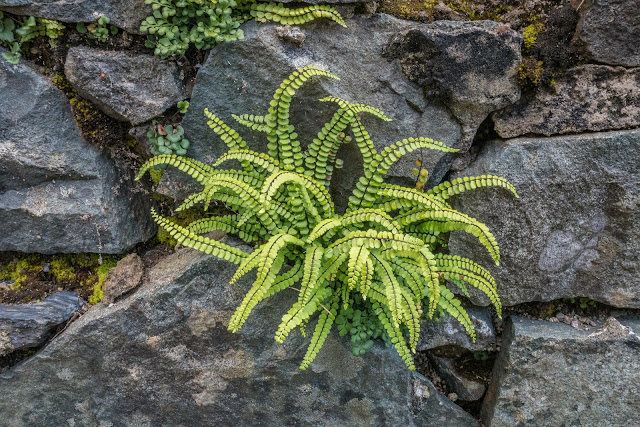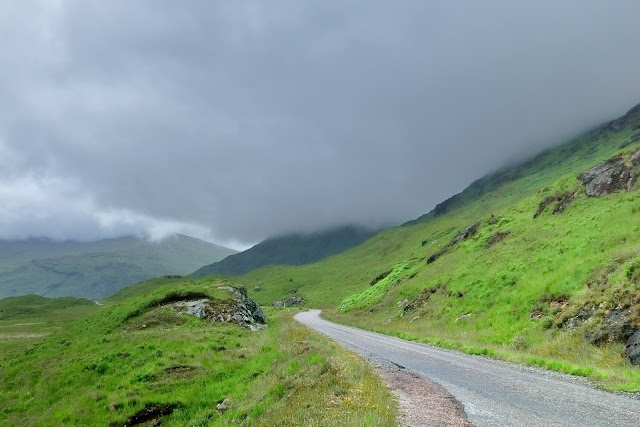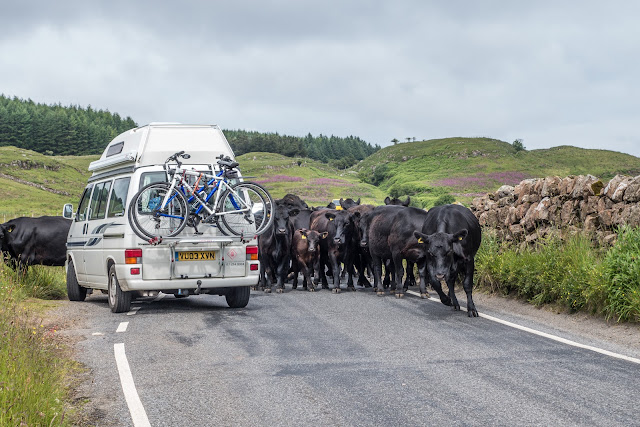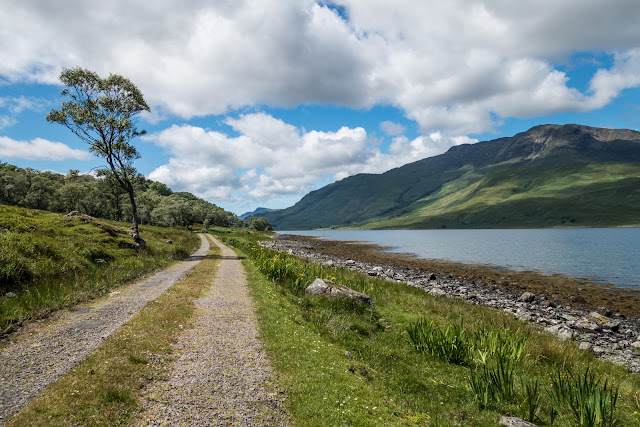So dawned our last day of Mull, and a great holiday it has been. Peaceful, interesting and lots to see.
This fern just appealed to me as it sprouted from the stone wall - Polypodium vulgare, the common polypody. Seen at a stop on our way to today's adventure.
Another abandoned cottage as we drove toward Loch na Keal, intending to explore another area we had not seen much of to date.
Northern Eggar caterpillar or asiocampa quercus, as its Latin name.
Loch na Keal - We drove along the southern edge of the loch toward Loch Ba. This was another unspoilt and beautiful drive. We watched sea eagles over the loch and just looked at the peaceful scenery, with all the worlds problems a million miles away.
We came across this pile of stones, obviously left by some earlier passer by.
Loch Ba
More views of Loch Ba
Our interest in this Mausoleum is the fact that, while traveling in Australia, Macquarie was a town that we passed by and it resonated when we came across this Mausoleum so unexpectedly in Mull!
So for a snippet of history as to what the connection was:
Lachlan MacQuarie was born on the Isle of Ulva, just off the northwest coast of Mull, in 1761. His father was a cousin of the last chief of Clan MacQuarrie. He joined the military in 1775, at the age of just 14, and rose to become a Major General, but retired to travel the world after 30 years of service. When his first wife died shortly after their marriage, MacQuarie was despondent and returned home to Mull. There he met and married his second wife, Elizabeth Campbell, in 1807. In 1809 he was offered the post of Governor of New South Wales and moved to Australia.
During his tenure in office (1810-1821) MacQuarie travelled widely in Australia and helped improve the political stability of the newly developing region. He resigned his post in 1821 due to poor health, and moved back to Mull, where he died in 1824.
So influential was MacQuarie in the establishment of a new and - for the time - relatively independent nation, that he became known as 'The Father of Australia' after his death in 1824.
After his death the mausoleum was built in the grounds of the Gruline estate, which he owned. The mausoleum is a very simple structure built of sandstone, a rectangle with a slate roof and gables at each end. There are three small mock buttresses on each long wall. Both gable ends have an inset niche, occupied entirely by a large carved monument in marble. Inside are buried Lachlan and Elizabeth MacQuarrie, and their 2 children; son Lachlan and daughter Jane, who died in infancy.
And so, as we wait to leave Mull, we watch as our ferry approaches and contemplate a fabulous holiday. I would like to return, if the weather were to be a kind as it was this time!
Our parting view of Castle Duart on our way back to the mainland. Unlike the day we arrived, this was a clear mist free one.



















































